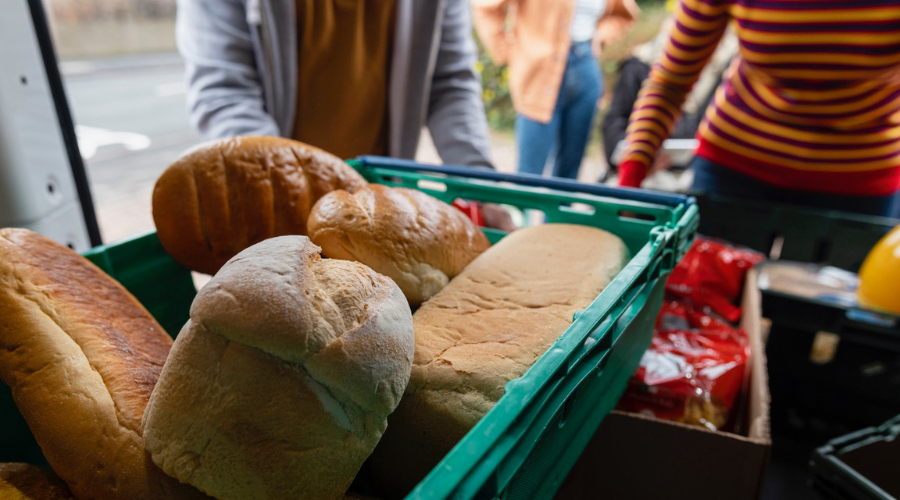New research says the cost of living crisis doesn’t have to be a ‘cost of giving’ crisis
An interesting new study by agency Blue State looks at how people in the UK are engaging with charities. This research into UK giving behaviours, through the cost of living crisis, shows a mood of cautious generosity among the UK public. The findings also indicate a mixed picture by income bracket – which could impact fundraisers as you continue your work in 2023. Click to read an overview then download the full report to explore the data further.
- Written by
- Lizi Zipser
- Added
- July 06, 2023

We are living in extraordinarily challenging times. Rising inflation, stagnating wages, and increases in the cost of goods and services mean that almost everyone is feeling a strain on their finances. Understanding how this has impacted and will continue to impact people’s charitable giving and behaviours is essential so that fundraisers can plan ahead and adapt their programmes.
Currently, the running costs of charities and nonprofit organisations are increasing alongside demand for services. Many domestic charities are feeling the squeeze while international organisations have grown significantly in income since the pandemic but have also increased outgoings to deal with escalating emergencies.
So, is it as bad as it seems? Who are the donors who will keep giving? Where are the opportunities during this turbulent time? And if people are giving more, what is motivating them?
To find the answers to these questions, Blue State surveyed 1,540 individuals in the UK in our yearly giving tracker. The aim was to identify trends in giving, understand how organisations can navigate these challenges, and help fundraisers find new donors in this difficult environment.
As you’ll see when you dive into the response from those surveyed, this research shows some reasons for both optimism and caution. While the lowest earners are having to cut back their donations, we’re seeing middle and higher earners keep up their donation rates, and even increase them.
Perhaps most reassuring to me is the fact that more people said they intend to increase their giving than those who said they intend to stop giving. People can see the need in the world is increasing. They want to be part of a solution and feel there is hope for them and the people and causes they care about.
Organisations that lean into this need for hope and solutions, while optimising for donor value and not just volume may be able to get through this crisis with their funding intact.
But the short answer to addressing the challenges fundraisers are facing right now is this – the cost of living crisis doesn’t have to be a ‘cost of giving crisis’ if you focus on the right people and asks.

Here are just some of the interesting insights taken from Blue State’s research:
- 20 per cent of people in the UK are intending to donate more to charity in 2023 than in 2022 – rising to 25 per cent for people with over £75,000 in yearly household income.
- The above figure will help to offset the one in five people who are not planning to donate to charities at all in 2023, a six percentage point / 50 per cent increase from last year (from 12 per cent to 18 per cent).
- People aged 55 to 64 years were the largest group giving above £250 a year, with 11 per cent giving £250-500 a year, and nine per cent giving more than £500 a year in 2022.
- Muslim donors in the UK were amongst the most generous with 21 per cent giving over £500 a year in 2022, and the most likely to say they intend to give more in 2023 (53 per cent).
- The West Midlands was the most generous region of the United Kingdom in 2022, with a mean average gift of £354 a year, followed by London (£295) and the North East (£263).
- The rate of those who stopped their donations in 2022 is, unsurprisingly, highest among those earning £15k or under – with most in this income bracket worried about affording basic needs.
- All income brackets were motivated to give by seeing rising domestic and international needs, including the war in Ukraine. Many, especially in lower income brackets, were motivated to give by an understanding of the rising costs for charities. Higher income donors felt a moral duty to share their privilege.

- An awareness of food insecurity is another big motivator for donations. While 10 per cent of people donated to support the cause of ‘hunger’ in 2022, this looks set to increase by almost three quarters to 17 per cent in 2023. More than half of British people donated to food banks in 2022 – a 22 percentage point increase on previous figures. Of those who donated (53 per cent vs 31 per cent in previous trackers), 93 per cent did so in the previous six months, and 44 per cent in the past month –showing not just one-off food donations, but regular support for food banks.
- The research also found increased charity shop purchases and engagement with raffles and lotteries in 2022 when compared to 2020-21.
- One in 10 under 24-year-olds had made a donation through gaming – an area for community fundraisers to look at for the future.
If this top-line summary has been useful as you plan your fundraising for the rest of 2023, and you’d like to explore the findings in more detail, please click here to download the full report from the Blue State website now.
IMAGES: © All images supplied by Blue State
















